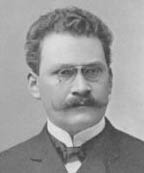 |
||||||||
|
||||||||
|
|
Call for papers on relativistic mass
Dear Colleagues, I hope you would agree that the present status of relativistic mass in spacetime physics should not be silently tolerated. On the one hand, the physics community is divided - some firmly reject the concept of relativistic mass (e.g., in papers entitled "The Virus of Relativistic Mass in the Year of Physics"), whereas others continue to regard it as an integral part of spacetime physics including in books published last year. On the other hand, both mass and relativistic mass appear to be equally supported by the experimental evidence - since mass is defined as the measure of the resistance a particle offers to its acceleration (which is the accepted definition based on the experimental evidence) and since it is also an experimental fact that a particle's resistance to its acceleration increases indefinitely (in a given reference frame) as the particle's velocity approaches the speed of light (in the same reference frame), it follows that the particle's mass increases when its velocity increases. Therefore the concept of relativistic mass (like the concept of mass) reflects an experimental fact. If you are interested in contributing to a volume on relativistic mass, please reply to this Call and also indicate if you would like to serve as an editor or co-editor of the volume. To try to reach a common understanding of relativistic mass, it was suggested by colleagues to include a special session on relativistic mass in the program of the Third Hermann Minkowski Meeting on the Foundations of Spacetime Physics. Best regards,
Vesselin Petkov
Recommendation: Perhaps the best starting point of any discussion on the concept of relativistic mass would be Feynman's brilliant explanation of its role in spacetime physics: "What happens if a constant force acts on a body for a long time? In Newtonian mechanics the body keeps picking up speed until it goes faster than light. But this is impossible in relativistic mechanics. In relativity, the body keeps picking up, not speed, but momentum, which can continually increase because the mass is increasing. After a while there is practically no acceleration in the sense of a change of velocity, but the momentum continues to increase. Of course, whenever a force produces very little change in the velocity of a body, we say that the body has a great deal of inertia, and that is exactly what our formula for relativistic mass says (see Eq. 15.10) - it says that the inertia is very great when v is nearly as great as c. As an example of this effect, to deflect the high-speed electrons in the synchrotron that is used here at Caltech, we need a magnetic field that is 2000 times stronger than would be expected on the basis of Newton's laws. In other words, the mass of the electrons in the synchrotron is 2000 times as great as their normal mass, and is as great as that of a proton! That m should be 2000 times m0 means that 1 - v2/c2 must be 1/4,000,000, and that means that v differs from c by one part in 8,000,000, so the electrons are getting pretty close to the speed of light." [The Feynman Lectures on Physics. The New Millennium Edition. Vol. 1 (Basic Books, New York 2010), p. 15.9.] |
|||||||
